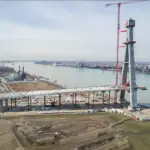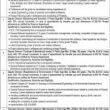The Suez Canal, an iconic feat of human engineering, stands as a vital artery of global trade and a unique geographical boundary between two great continents: Africa and Asia. This remarkable waterway not only connects the Mediterranean Sea to the Red Sea but also symbolizes a line of division and unity, bridging cultures, economies, and continents.

A Transcontinental Landmark
The Suez Canal, spanning 120 miles (193 kilometers), was completed in 1869 and has since been a cornerstone of international commerce. It allows ships to bypass the lengthy and perilous journey around the southern tip of Africa, drastically reducing travel time and fueling economic development across the globe.
What makes the Suez Canal even more intriguing is its role as a physical boundary. It divides Egypt into two distinct parts: the African mainland and the Sinai Peninsula, which lies in Asia. This duality makes Egypt a transcontinental country, a unique distinction shared by only a few nations in the world.
Port Said and Port Fuad: Sister Cities on Opposite Continents
Two Egyptian cities, Port Said and Port Fuad, perfectly illustrate the canal’s geographical significance. Located on opposite sides of the Suez Canal, these cities are mirrors of each other, connected by ferries and a shared cultural identity, yet symbolizing the division between Africa and Asia.
- Port Said: Situated on the African side, Port Said is a bustling port city known for its rich history and vibrant maritime activities. It serves as the northern gateway to the Suez Canal and is a hub of trade and tourism.
- Port Fuad: Across the canal in Asia, Port Fuad is quieter but equally significant. This city, with its serene atmosphere, offers a striking contrast to the dynamic energy of its African counterpart. Together, these cities highlight the seamless coexistence of two continents within a single nation.
Egypt: A Bridge Between Continents
Egypt’s transcontinental identity, anchored by the Suez Canal, positions the country as a strategic link between Africa and Asia. This unique geographical and cultural bridge fosters cross-continental trade, diplomacy, and collaboration. Egyptian identity itself is a testament to the blending of African and Asian influences, seen in its history, architecture, and diverse traditions.
Strategic and Economic Importance
The Suez Canal’s significance extends far beyond its geographical role. It is a critical economic lifeline, handling roughly 12% of global trade. Oil tankers, cargo ships, and naval vessels traverse its waters daily, making it one of the most heavily trafficked waterways in the world. Its control by Egypt ensures the nation’s continued prominence in global affairs.
A Symbol of Unity and Progress
Though it divides two continents, the Suez Canal serves as a unifying force, fostering connections and collaborations that transcend geographical boundaries. It stands as a testament to human ingenuity and the power of shared progress, making it not just a boundary but also a bridge of possibilities.
Conclusion
The Suez Canal is more than just a waterway; it is a symbol of Egypt’s transcontinental identity, a lifeline for global trade, and a boundary that brings the world closer together. Port Said and Port Fuad, as guardians of this historic channel, remind us of the delicate balance between division and unity that defines our world. Through its unique position, the Suez Canal continues to shape history, connecting continents, cultures, and economies for generations to come.





















